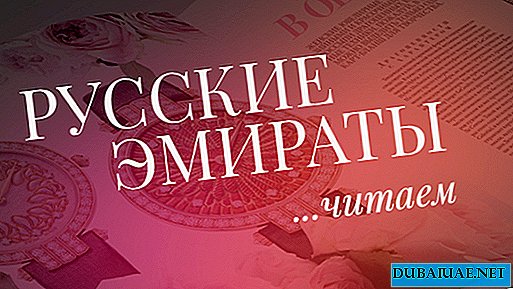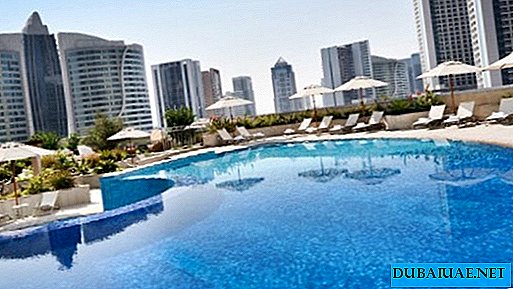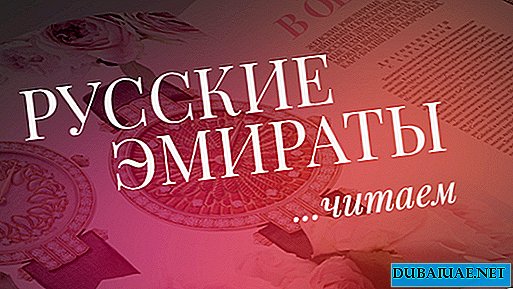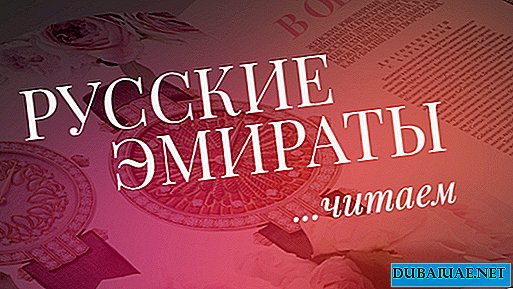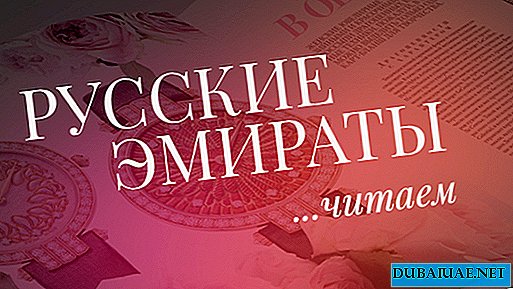 Text: Nikolai Gudalov, Master of International Relations, specialist in the history and politics of Arab countries
Text: Nikolai Gudalov, Master of International Relations, specialist in the history and politics of Arab countries Photos: Qasr Al Hosn Festival, from the archives of the publisher
TRADITIONAL EMIRATE SPORTS, AS IN A DROP OF WATER, REFLECT THE WHOLE WAY OF THE BEDUINIAN SOCIETY, AND THE BORDERS BETWEEN SPORTS AND HOUSES, ENTERTAINMENT AND SURVIVAL AS A WAY.
The harsh life in the desert and at sea, communication with representatives of the local fauna - for the Arabian Bedouins, all this has been a sport in the broad sense of it for centuries. Today, the need to fight for existence in harsh conditions has disappeared, and the latest technologies and animal care have been introduced into traditional sports activities. But the main thing has not disappeared: the sports excitement of the emirates and the desire to preserve their traditions.
Arabian horses at home
Passion for Arabian horses spread throughout the world, but they continue to give the greatest, truly royal honor at home - in the Arab countries, and especially in the Emirates.
So, since 2000, the Cup of the President of the UAE has been played every February in Abu Dhabi in endurance racing among purebred Arabian horses. At a desert distance of 160 km only horses older than seven years are allowed, with a pulse of no more than 64 beats per minute. Around each horse dozens of people crowd - they pour water on the noble participants. This championship has the largest prize background in the world (in 2013 it amounted to 1.5 million dirhams, or about 410 thousand dollars). Among the owners of horses - persons of royal blood, especially the ruling families of the Emirates. In Arabic, the word "horse" ("hail") has the same root as words whose meanings are related to imagination, fantasy, charm, pride, arrogance. Is it not such feelings that the image of a proud Arabian horse races through the desert sands under the admiring gaze of his loving master?
 Horses of the Arabian breed are known for their intelligence, flexible character and, of course, endurance. They are an integral part of the cultural heritage of the UAE and the entire Arab world, the subject of pride and love of the emirates. It was in Ancient Arabia (as well as Mesopotamia and Egypt) that the horse was first domesticated. The famous light horses of the "Arab blood" were more mobile and faster in battle than the heavy horses of Alexander the Great and the Crusaders, and it was they who gave rise to the breed with which the conquistadors conquered America.
Horses of the Arabian breed are known for their intelligence, flexible character and, of course, endurance. They are an integral part of the cultural heritage of the UAE and the entire Arab world, the subject of pride and love of the emirates. It was in Ancient Arabia (as well as Mesopotamia and Egypt) that the horse was first domesticated. The famous light horses of the "Arab blood" were more mobile and faster in battle than the heavy horses of Alexander the Great and the Crusaders, and it was they who gave rise to the breed with which the conquistadors conquered America.
Now in the UAE there are several farms where purebred Arabian horses are raised. Emirates contain about seven thousand horses, each of which can cost the owner 30 thousand dollars a year. They have to import hay even from Canada, and change horseshoes more often than in other countries: hooves grow faster due to the hot climate. But all these costs are recouped - in honor of the famous Godolfin Arabian - one of the three horses-ancestors of purebred riding horses, who lived in the XVIII century), which belongs to Sheikh Mohammed bin Rashid Al Maktoum, the ruler of Dubai, brings the owner several tens of millions of dollars a year.
Like most sporting events, horse racing (jumping, endurance racing, racing without obstacles) are held in the cool season - from November to March. The UAE has achieved world-wide success: in 1998, the country hosted the World Endurance Championship for the first time, and already in 2008 its representative won this cup.
Dozens of tournaments are organized annually in the UAE. There are separate competitions for juniors and young riders, as well as for women. In 2013, 132 participants from all over the Earth took to the start in the President’s Cup alone, which indicates the popularity of this traditional sport.
Desert Speedboats
Bedouin life can hardly be imagined without a camel. From ancient times, it was a universal measure of wealth for its owner: a cabman, a source of food (bodily and spiritual - it was sung in verse) and even protection from sandstorms and heat.
The fact is that it was used as a cover from flying sand, and since the body temperature of a camel is always lower than in the environment, it was possible to cool around it. The words of one of the Koran’s suras are fully applicable to the camel, emphasizing the benefit and beauty of these animals: “Verily, the look at the camels is veneration, and the treatment with them is instruction and edification, and in riding them is dignity, and in acquiring them is wealth, and in them - recovery, and in their character - sincerity, understanding and devotion, and in their noses - pride, dignity and arrogance. "
Now camels attract the attention of the Emirates no longer as horse-drawn vehicles and a source of healing milk, but as participants in races and beauty contests. No wonder the word "dromedar" (the traditional Arabic one-humped camel) came from the Greek dromas - "running" (hence the "airfield", etc.). Previously, camel races were organized on the occasion of major holidays - weddings, festivals, visits of sheikhs. Now in the UAE several regular competitions are held. The jabbar is the most popular breeding breed in the region, and the most valuable are the generous running camels from Oman. The breed "Majahim" ("ferocious") is also widespread. Sometimes camels are classified by country of origin: on the run, mahalliyyat (local), umanyat (Omani) and judaniyat (Sudanese) are most often involved in the races.
Camel's sports talents are revealed The largest competitions with millionth stakes and the presence of the most august persons are, among others, the Al Wasba Festival (Abu Dhabi), as well as the Sheikh Sultan Bin Zayed Al Nahyan Festival. Modern stadiums have been built for camel racing in all seven emirates, attracting numerous fans in the first three years of life, training begins in the second year, when the budding "athlete" runs 20 km a day at a speed of up to 20 km per hour. The champions can run twice as fast!
The biggest competitions with millionth stakes and the presence of the most august women are, among others, the Al Wasba Festival (Abu Dhabi), as well as the Sheikh Sultan bin Zayed Al Nahyan Festival. Modern stadiums have been built for camel racing in all seven emirates, attracting numerous fans. Admission to them is often free. Interestingly, sometimes competitions are held separately for camels belonging to the sheikhs and the "general public." In some, only purebred "desert ships" can participate, while others are allowed to "half-breeds" ("muhajjanat").
One of the “visiting cards” of camel racing in the UAE is jockey robots. They appeared after 2002, when the law prohibited the use of children under 15 years of age or weighing less than 45 kg as riders. This was done to protect children, mainly from immigrant families, from injuries and ill-treatment. At first they tried to make robots as similar as possible to live jockeys: they weighed more than 20 kg, about the size of a child, and had the corresponding shape. Now robots do not copy people, and their design is subordinated only to functionality: they consist of a light aluminum frame (iron ones are used in training), a battery, a radio control transmitter, a motor and a whip (which does not harm the animal). "Jockeys" have become much easier (1.5-2 kg) - hence the unprecedented speed records! about the popularity of this traditional sport.
The most athletic "friend of man"
 Other running competitions are becoming more and more popular in the UAE - among saluki dogs. These graceful, lean animals, apparently, belong to one of the oldest dog breeds, domesticated by humans in Ancient Sumer and Egypt and have not changed much over millennia. According to the assumption of Hamad Al Ghanim, the head of the Center for Arabian Saluki in Abu Dhabi, this breed was known to the inhabitants of Arabia already 7-8 thousand years ago. The Bedouins used a quick-footed saluki with sharp eyesight, sensitive scent and strong, as if "laughing" jaws, for hunting desert jerboas - jerboa, gerbils, hares, gazelles. The “Friend of Man” helped to bring a little variety into the meager diet of the owner, for which the nomads showed the saluki the highest respect.
Other running competitions are becoming more and more popular in the UAE - among saluki dogs. These graceful, lean animals, apparently, belong to one of the oldest dog breeds, domesticated by humans in Ancient Sumer and Egypt and have not changed much over millennia. According to the assumption of Hamad Al Ghanim, the head of the Center for Arabian Saluki in Abu Dhabi, this breed was known to the inhabitants of Arabia already 7-8 thousand years ago. The Bedouins used a quick-footed saluki with sharp eyesight, sensitive scent and strong, as if "laughing" jaws, for hunting desert jerboas - jerboa, gerbils, hares, gazelles. The “Friend of Man” helped to bring a little variety into the meager diet of the owner, for which the nomads showed the saluki the highest respect.
In Islam, keeping a hunting dog is welcome, but it is forbidden to eat game torn by it, just as it is forbidden to eat with it from the same dish. However, for the Saluki, the Arabian tradition made an exception. The Bedouins, who actually didn’t refer Saluki to the “dog family,” spoke of a noble man: “He grew up with Saluki,” and the epithet “al-Hurr” - “free, noble” was applied to the animal itself. Saluki not only could share a meal with the Bedouins, but also had their own special diet - dates, rice, milk, olives and even meat, which is so valuable in the desert. They drank only fresh water, sometimes with the addition of a pink fragrance. To prevent dogs from injuring their paws on hot sand, they were greased with henna or peanut butter. Saluki often lived more than 20 years and became full members of the family. The owners gave them poetic names.
After the urgent need for hunting disappeared in modern Emirates, and legislation in this area was tightened, saluki became "participants" in sports races and beauty contests. Representatives of both varieties of the breed - smooth and long-haired (the latter are called "risha" - "feathered" - because of the long hair on the tail, ears, chest and sides) compete. They train future champions from one year, and at four they begin to hunt. Children of the Emirates love to argue about whose dog will drive the most rabbits.
In adult running, saluki often become the passion of a lifetime. They can spend whole nights in the desert, training pets. At the same time, live game is rarely used in competitions. Even if the saluki chase a living gazelle, they save it as soon as the dogs grab the victim. At various tournaments held in the UAE (for example, as part of the Sheikh Sultan bin Zayed Al Nahyan’s Camel Festival), unprecedented speed records are set - up to 80 km per hour. According to the "patriots" of the breed, the saluki can get ahead of the greyhound, which is traditionally considered the fastest-footed dog in the world.
Records are also set by people, receiving prizes of hundreds of thousands of dirhams and buying saluki for several million. So, Sheikh Rashid bin Ahmad, a representative of the Al Maktoum ruling family in Dubai, owns more than 300 saluki who live in air-conditioned rooms and have at their disposal a seventy-meter swimming pool! He says that saluki can bring triple benefits to the buyer - even when he spends more than one million dirhams on the dog. According to the forecasts of the sheikh, after two or three years of running, saluki can become even more popular than camelids. Several special tracks for this breed of dogs have already appeared in the UAE.
Caliph and Bedouin Sport
 Man made friends with the falcon in Ancient Mesopotamia. At all times, hunting with this powerful and graceful bird was considered a matter of royal persons. In the Muslim world, stories about the legendary falconry-entertainments of the caliph Yazid are popular. Meanwhile, for the Bedouins of Arabia, the falcon was more than a means of leisure. Used often with saluki to hunt a thin desert bunny or bustard - a khubar, he helped nomads get some meat. In addition, long-distance hunting trips were used by tribal sheikhs to explore the remote corners of their possessions. The age-old customs of communication with the falcon, developed by the ancestors of the emirates, are preserved in the country and now, in an era of plenty, has turned into a popular form of traditional sport. The taming of free birds and hunting with them really required extraordinary abilities from a person, not inferior to the athlete's talent. In the UAE, two species of falcons fly for wintering - peregrine falcons and balabans. The Bedouins began to catch them in September: the next month, Khubars arrived in the desert, so the birds had to be trained for hunting.
Man made friends with the falcon in Ancient Mesopotamia. At all times, hunting with this powerful and graceful bird was considered a matter of royal persons. In the Muslim world, stories about the legendary falconry-entertainments of the caliph Yazid are popular. Meanwhile, for the Bedouins of Arabia, the falcon was more than a means of leisure. Used often with saluki to hunt a thin desert bunny or bustard - a khubar, he helped nomads get some meat. In addition, long-distance hunting trips were used by tribal sheikhs to explore the remote corners of their possessions. The age-old customs of communication with the falcon, developed by the ancestors of the emirates, are preserved in the country and now, in an era of plenty, has turned into a popular form of traditional sport. The taming of free birds and hunting with them really required extraordinary abilities from a person, not inferior to the athlete's talent. In the UAE, two species of falcons fly for wintering - peregrine falcons and balabans. The Bedouins began to catch them in September: the next month, Khubars arrived in the desert, so the birds had to be trained for hunting.
To catch the falcon, the catcher took refuge in a pit previously dug in the sand, covered with palm leaves. From it, he controlled a complex system consisting of ropes several hundred meters long, stretched through steel rings arranged in the shape of the letter L, a net, a rim and a tethered live pigeon or dummy made of feathers. As soon as the falcon grabbed the bait, the hunter covered it with a net.
After the capture, an even more difficult training process began. They did not feed the falcon and put a leather cap-hood on their heads - it was easier to tame. The owner gave the bird a name, accustomed to his voice and spent as much time with it as possible. Nearby, he always held a feather bait. During the day, the falcon sat on the leather sleeve of the owner, at night - on a special perch, to which his leash was attached using a hinge mechanism. So the bird felt a little freer. Gradually, the falconer let his ward fly for free prey, teaching the bird not to kill it immediately: this allowed hunting to observe the canon of Islam, according to which the animal should be alive when his throat is cut and blood is lowered.
Today in the UAE, falconry is strictly regulated by law. Emirates love for this occupation began to find its reflection in numerous contests, festivals and exhibitions. For example, a competition is held annually in Dubai, in which the fastest-winged falcon is determined. Great attention at the highest level is paid to the preservation of the natural and cultural heritage. Thanks to the efforts of the UAE in the international arena, hunting with falcons was recognized by UNESCO as a kind of intangible cultural heritage of mankind. Since 2001, the UAE Falcon Club has been working to preserve the ancestral tradition.
As part of a special program launched by Sheikh Zayed in 1995, more than 1,300 hunting birds were released at the end of the hunting season. Before this, the birds are ringed, a special chip is implanted under their skin, and they receive the necessary training in order to get comfortable in the wild again. In the UAE, there is a unique Falcon Hospital, as well as the largest center in the world, in which falcons are raised in captivity in order not to use rare wild birds for hunting.
Finally, for the falcons in the UAE, Khubar breed birds are specially grown, the natural population of which is also declining. So the ancient tradition coexists with the new environmental awareness of the emirates.
Ancient yachts
 In those days when the inhabitants of the Emirates were not yet attracted to the world's most expensive yachts and the largest competitions like the Volvo Ocean Race, local residents made extensive use of wooden dhows for shipping and pearl fishing.
In those days when the inhabitants of the Emirates were not yet attracted to the world's most expensive yachts and the largest competitions like the Volvo Ocean Race, local residents made extensive use of wooden dhows for shipping and pearl fishing.
Now in the UAE, they are organizing numerous dhow races with the most accurate observance of traditions. Ship hulls are made of saai wood without the use of modern materials such as fiberglass. Dow can be varnished, but not painted. Sails are allowed to be made of nylon and painted (but most often they are white, according to tradition).
Racing takes place in two main Dow classes - 43 and 60 feet long (for example, the Marwa and Abu Al Abyad tournaments in Abu Dhabi). Sometimes the physical strength of the rowers is used (usually four), and sometimes they rely only on the vagaries of the bay's winds. In any case, before going to the start, the participants carefully study the weather conditions.
The annual Al Ghaffal race is the largest in the world. In May 2013, about one hundred dows crossed 54 nautical miles from Sir Bu Nair Island in Sharjah to the Burj Al Arab Hotel in Dubai, making a six-hour journey not only in space but also in time.If the legendary hotel is a symbol of the newest UAE, then Sir Bu Nair is the place of the traditional stop for pearl hunters, where they gathered in antiquity to celebrate the end of the season before heading home for a summer vacation.
We note in conclusion that the traditional sports activities of the emirates are not limited to the above. There are countless varieties of folk games that require strength, dexterity and ingenuity. Connoisseurs counted only 42 games played by local women - they did not always languish in a harem or were busy with homework! Essentially, team sports with appropriate rules and customs include games such as al-haul (two teams attack each other's territory trying to touch the opponent’s flag), al-halle (a player of one team tries to touch an opponent’s player and run away from the “enemy” territory intact), “at tabba” (one team tries to hit the target on the opponent’s territory with the ball). And, for example, in the game “As Sucla”, girls should throw a pebble as high as possible and, until it falls, use the same hand to pick up as many pebbles as possible from the ground. It is clear that these folk amusements are by no means less complicated than those that we attribute to modern sports. Who knows, maybe over time some of them will form the basis of some new Olympic discipline - just like the Emirates have become a modern country, without forgetting about their traditions.



